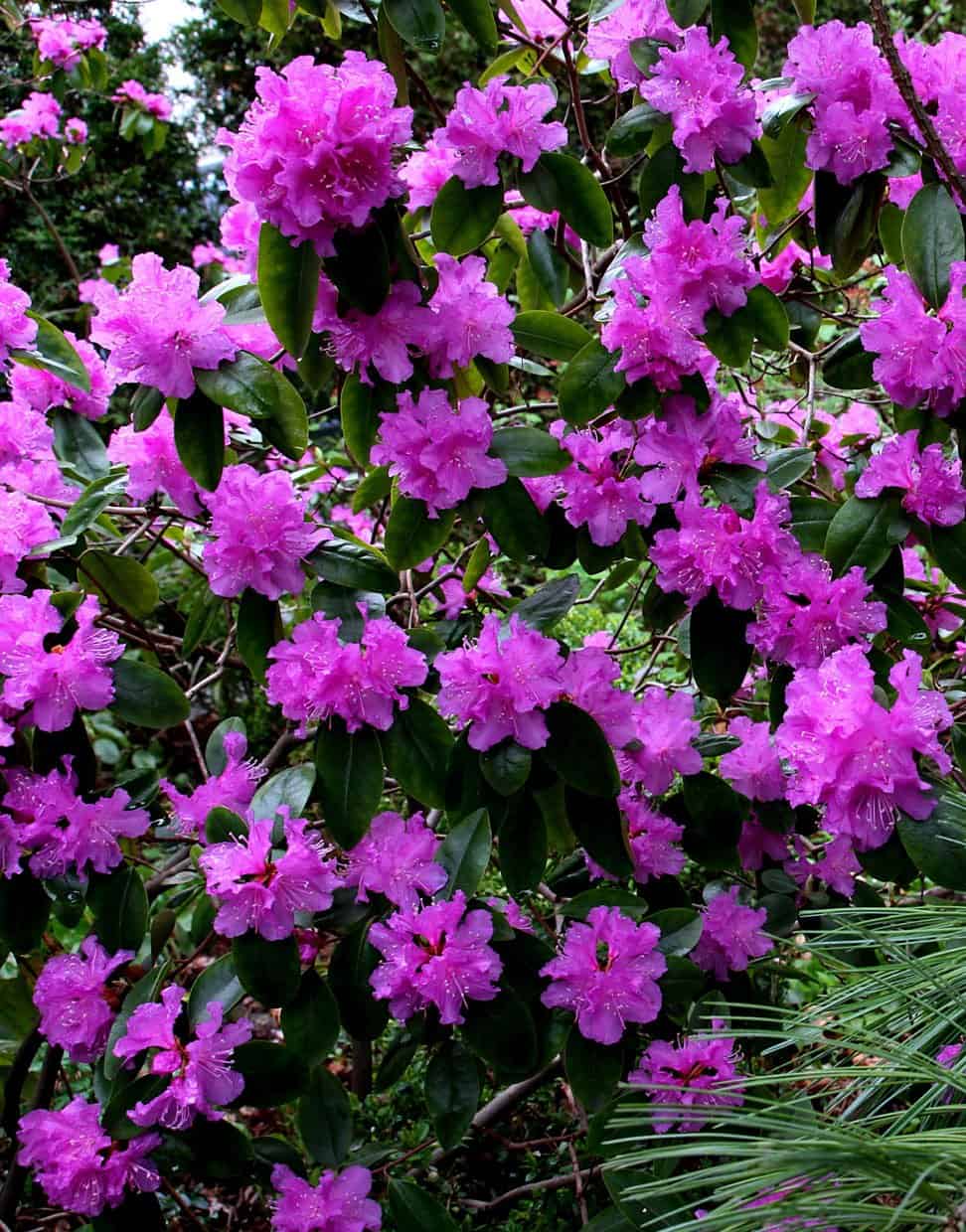
Two PJM rhododendrons blooming in the front garden are making a gorgeous display, with hundreds of lavender-pink flowers stopping traffic on my road. Each spring, people ask what these shrubs are, and I’m pleased to say almost every garden can have some. The small-leaved lepidote rhododendrons in the PJM group are the easiest rhodos to grow. (For a list of cultivars, see my “Making a Garden” blog entry on March 30, 2011.) The secret to their success is their ability to grow in the alkaline soil found in southern Ontario.
Rhododendrons are ericaceous plants and require acid soil, usually found where granite forms the underlying bedrock. The bedrock in southern Ontario is limestone, and that causes our soil to be alkaline, quite the opposite to what rhododendrons need. Soil acidity or alkalinity is measured on a scale of one to 14, with neutral at seven. Soil registering below seven is acidic, and soil above seven is alkaline. The measurements are referred to as pH (parts hydrogen), and the measurement for my garden soil is pH 7.3, or slightly alkaline. Getting my head around the fine points of pH science would require a degree in soil chemistry, but it’s not hard to understand in simple terms. As a demonstration, distilled water measures neutral (pH 7), baking soda is strongly alkaline (pH 9), and bleach is drastically alkaline (pH 13). Going the other way (below neutral pH 7), black coffee is strongly acidic (pH 5), tomato juice is very acidic (pH 4), and lemon juice is extremely acidic (pH 2).
As it happens, rhododendrons grow best in soil with acidity in the range of black coffee (pH 5 to pH 6). Acidic soil amendments (like sulphur in pellet or powder form) can be dug into alkaline soil, but their acidity is short-lived and quickly overwhelmed by the surrounding alkaline environment. Consequently, I often see declining rhododendrons— particularly large leaf elepidote cultivars—with sparse, yellowed foliage and few flowers. They just can’t cope with alkaline soil. Fertilizer might perk them up for a few weeks, but then they return to their sickly state.
Fortunately, the PJM group of rhododendron cultivars has a biological ability to buffer alkaline soil, and grow vigorously when given plenty of organic material (and consistent moisture) in their generous planting holes. I add lots of peat moss, composted manure and leaves when planting. I also place a three-inch (8-cm) layer of leaves over the root zone in autumn. In spring, they get a drink of water-soluble fertilizer (using a nearly balanced analysis) after they finish flowering to help them grow new twigs and buds for next year’s blooms.
The PJM shrubs have been in full bloom for almost two weeks, and now two shrubs of ‘Olga Mezitt’ are about to open. These will have vibrant pink flowers, and likely add another two weeks to the display. The shiny foliage continues to be attractive after the flowers are finished, and takes on a deep burgundy colour in cold weather. The two PJM shrubs grow in light shade, and have become leggy (four feet/1.2 m) as they reach for light. This has been an advantage, as one climbs into a long-needled pine, and the other reaches up to window height, allowing the flowers to be visible from indoors. The ‘Olga Mezitt’ shrubs are in direct sunlight and are more compact, with deeper colour in their winter foliage.









do PJM rhododendrons lose their leaves in winter?